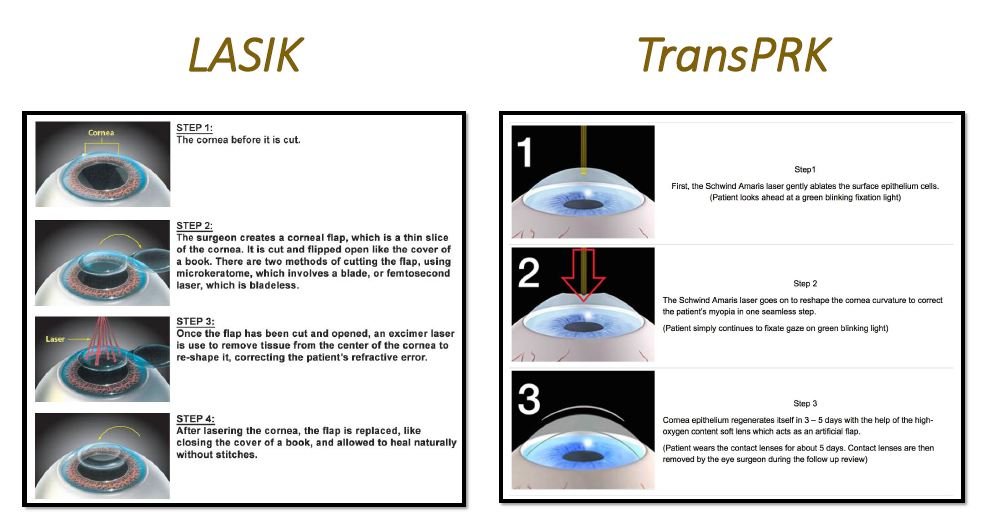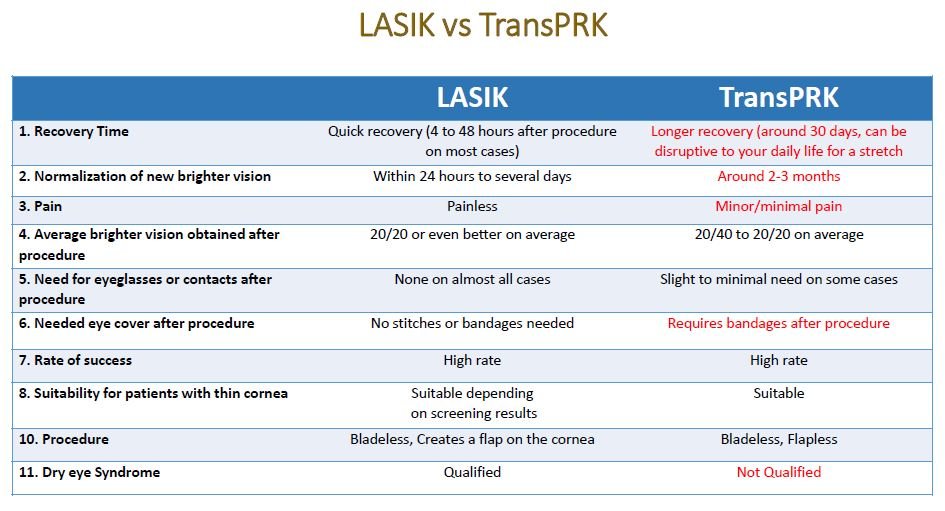Transepithelial Photorefractive Keratectomy (TransPRK)
What Is TransPRK?
Transepithelial Photorefractive Keratectomy (PRK) is a type of refractive surgery designed to correct one’s vision. This kind of surgery uses a laser to treat vision problems caused by refractive errors.
This treatment intends to treat nearsightedness (myopia), farsightedness (hyperopia), and astigmatism by reshaping the cornea. This improves the way light rays are focused on the retina.
Should I Get PRK?
If you have dry eyes or thin corneas and want to have refractive surgery, TransPRK may be a good choice for you. This is because some other types of refractive surgery, such as LASIK, are not recommended if you have these conditions.
Also, this treatment is a wonderful alternative for patients who don’t qualify for LASIK, due to certain conditions, as it likewise delivers excellent results and bright vision.
Differences Between LASIK and PRK
Both eye surgeries have the same intent — though they are different.
LASIK and TransPRK use a laser to reshape the cornea, the clear outer layer of your eye that focuses light so you can see clearly. But they do it in slightly different ways.
LASIK creates a thin flap in the cornea. TransPRK removes the outer layer of the cornea, which grows back over time.
Both techniques are equally effective in permanently correcting your vision. The main difference is the recovery time. LASIK takes a few days or less to see clearly while TransPRK takes about a month. After LASIK, most patients can see clearly within a few hours. Because of the corneal surface removal, TransPRK takes a bit longer (and, unlike LASIK, some minor pain follows).
Here are more of the differences between the two vision correction procedures:



